End of the Line for the 2200 Series CTA Cars
After a 44 year run, the oldest cars on the CTA roster were retired from service on July 31st. In the weeks leading up to that date, I filmed several afternoon runs of the 2200 series on the Blue Line shown in the video above.
The streamlined stainless steel cars were loved by a few and loathed by many. They had their faults, but the 2200 series represented several firsts and set the design style which has existed on Chicago’s elevated transit cars ever since.
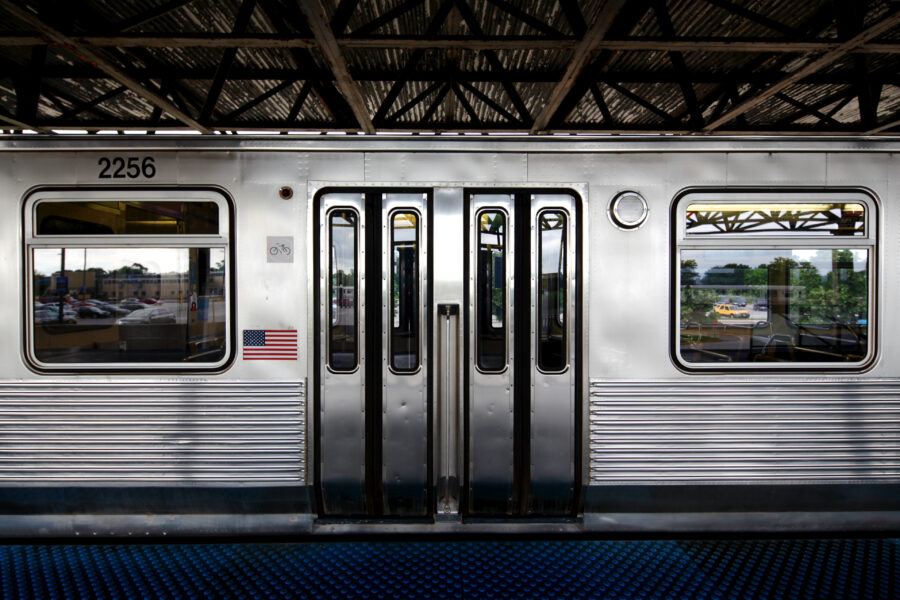
The Notorious Distinguishing Feature
The doors are usually what riders remember about this car. They’re commonly referred to as “blinker doors” because they open inward.
They had a somewhat comical effect on those squeezing in when there’s little room left. It always appeared to me as though the doors are trying to push people in the car like a trash compactor, or maybe swallow them. I was pushed by these doors several times at rush hour, until eventually learning to just wait a minute or two for a less crowded train.
As uncomfortable as it was to get pushed by the doors, the larger problem was accessibility for the disabled. With doors too narrow to allow a wheelchair through, the cars were relegated to the center of the line. This allowed the accessible cars to be nearest to the station elevators.
The retirement of the 2200s also means the end of L trains with blinker doors. They were a standard for CTA train cars beginning in 1947.
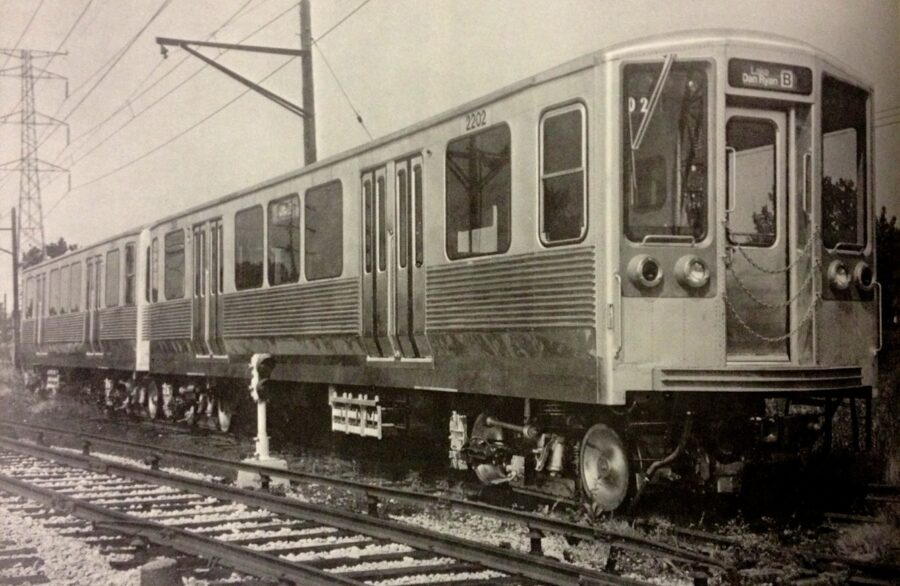
The first cars in the series, 2201 and 2202. Image courtesy of and copyright CTA. From the book Chicago’s Rapid Transit, Volume II.
In the book, Chicago’s Rapid Transit, Volume II, the following account was given of the introduction of the new cars:
Upon arrival at Skokie Shops, 2201-2202 were inspected and prepared for revenue service. Complete with signs for the yet-to-open Dan Ryan line, the cars are ready to leave Skokie Shops. Their premier run was a preview of the Dan Ryan line for the institute for Rapid Transit on June 28, 1969. While waiting for dignitaries to arrive these cars were well noted by WGN radio’s traffic helicopter announcer who kept telling the motorists about those “beautiful new shiny elevated cars at 47th Street” as expressway traffic crawled into the Loop. The preview train operated between 47th and 95th Street stations on the inbound track. The 2200s entered revenue service when the Dan Ryan line opened on September 28, 1969.
Applying the International Style to Rapid Transit
The introduction of this series marked a distinct break with previous designs. These trains featured large windows, black padded seats, fluted side panels, and an abundant use of interior and exterior stainless steel. It was the rapid transit equivalent of Mies’ Barcelona Chair or IBM Building.

Passengers exiting the 2200 series trains at Belmont in 1970. Image courtesy of and copyright CTA.
This CTA photo compares the 2200 series train with what it was replacing:
This photo, just two months after it opened, shows the Belmont station on what is now the O’Hare Branch of the Blue Line, with two Douglas-Milwaukee “B” trains berthed in the station. The station opened on February 1, 1970 as part of a new subway to connect the Logan Square ‘L’ (opened in 1895) to the new expressway median line in the Kennedy, terminating at Jefferson Park. The line would later be further extended to Chicago-O’Hare International Airport (ORD).
Stations on the Kennedy and Dan Ryan lines, including this modern, cavernous subway station and the aesthetics of these, then-new 2200-series railcars were designed by famed Chicago architecture firm Skidmore, Owings and Merrill, known for its application of International Style architecture. This same year, the now-iconic John Hancock Center would open, just three years before the Sears Tower (1973, now Willis Tower) would open, both also the work of SOM. Note the similarities between the arc of the top of the roofline of these new train cars and its similarity to the arc of the roof further into the station.
On the right, a train of older 6000-series railcars, built by CTA in the 1950s, shows a stark contrast between older ‘L’ equipment and modern, high-performance cars with modern amenities like bright, fluorescent lighting and air conditioning.

Original interior of 2200 series, CTA photo. From the book Chicago’s Rapid Transit, Volume II.
Later changes undid some of the original modern style. The black seats were replaced in the 1970s with fabric-clad plastic, and faux woodgrain panels were added. Despite this, it still retained much of its midcentury charm.
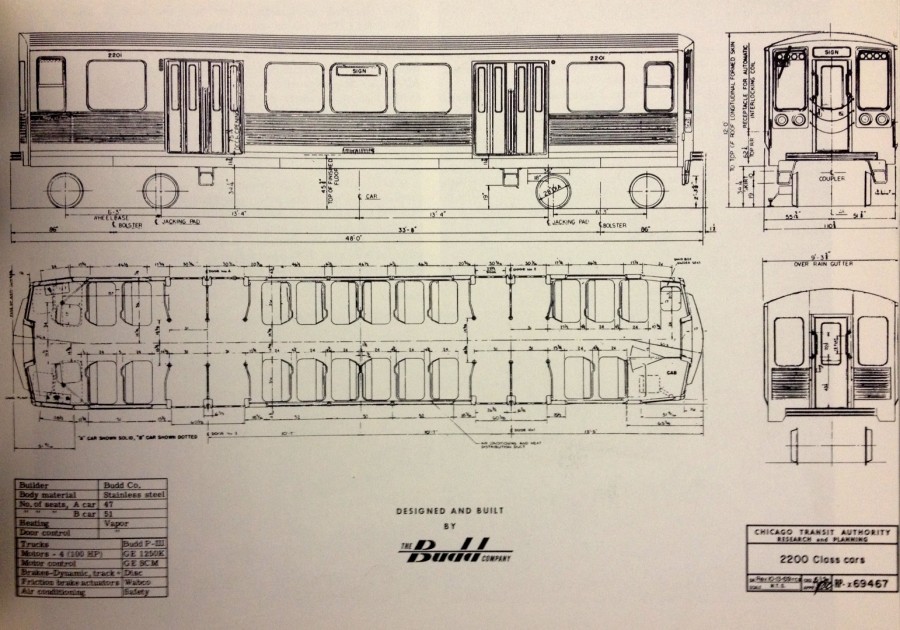
From the book Chicago’s Rapid Transit, Volume II.
A Few Escape the Scrap Heap
The vast majority of the 2200 series cars are being sold for scrap, but there will be a few that live on for other uses. Two units will be at the Illinois Railroad Museum, others have been sold to government agencies for training purposes, and one sold for use in the upcoming Transformers 4 movie.

One Final Ride
The CTA will give the 2200 series one final run this Thursday:
After more than 40 years of service to Chicago Transit Authority (CTA) customers, the CTA will celebrate the workhorses of the Blue Line – the 2200-series rail cars built in 1969-1970 – with a ceremonial last trip this Thursday, August 8.
Most distinctive for their pivoting ”blinker” entry doors, the 2200s spent most of their service careers assigned to the Blue Line and have served hundreds of millions of people traveling between work, home, O’Hare International Airport and spots in between. The CTA’s oldest cars are being retired as CTA continues to upgrade its rail fleet as part of an aggressive modernization and infrastructure plan by Mayor Rahm Emanuel and CTA President Forrest Claypool.Customers and rail fans are welcome to join in on the CTA tradition of saying “Goodbye, Old Friends” as the last, eight-car consist of 2200-series rail cars makes its final trip along the Blue Line from O’Hare to Forest Park and back. Normal CTA fares apply.
All eight rail cars will be decked out with their original exterior decals and will even feature interior advertising cards from the period when they first launched.

It was time for these trains to go, but I’ll be one of the few that misses riding them on my commute.
Additional photos:

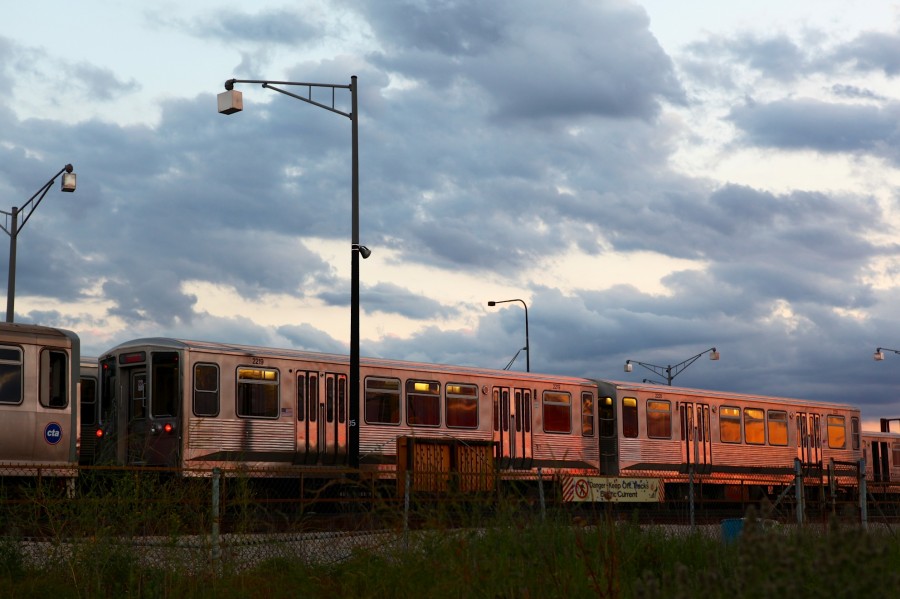
Further reading:
- 2200 series (chicago-l.org)
- Join CTA in Saying ‘Goodbye, Old Friends’ to the 2200-Series Rail Cars
- Chicago’s Rapid Transit, Rolling Stock, 1947-1976, Vol 2
Special thanks to chicago-l.org for much of the history and information in this article. Unless otherwise noted, all photos by Chicago Patterns.
Soundtrack for the featured video is Other People by Andrew Souter, used with permission.
UPDATE 08/08:
The final run was today, and I was aboard. I’ll be working on a follow up video in the next few weeks that shows the final trip. In the meantime, here are a few photos:
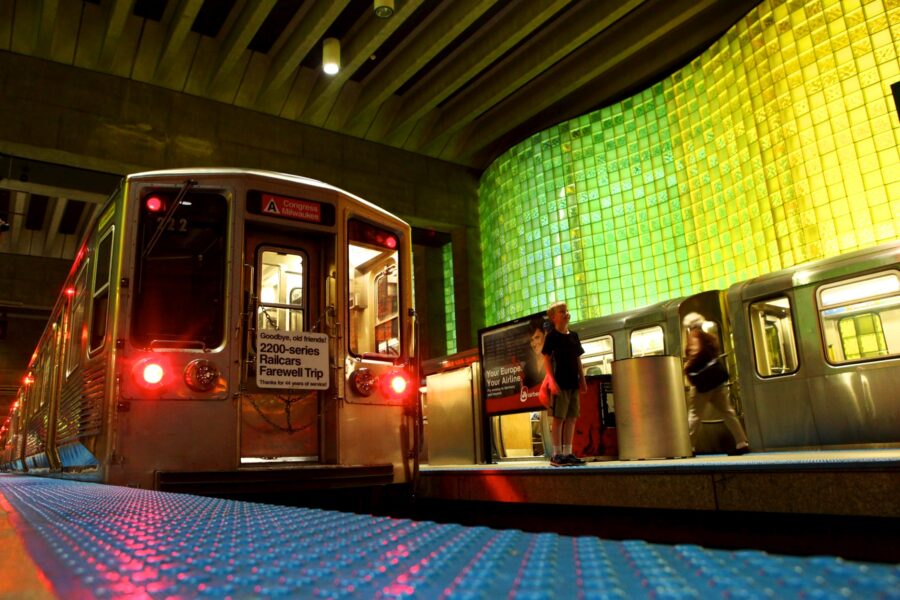
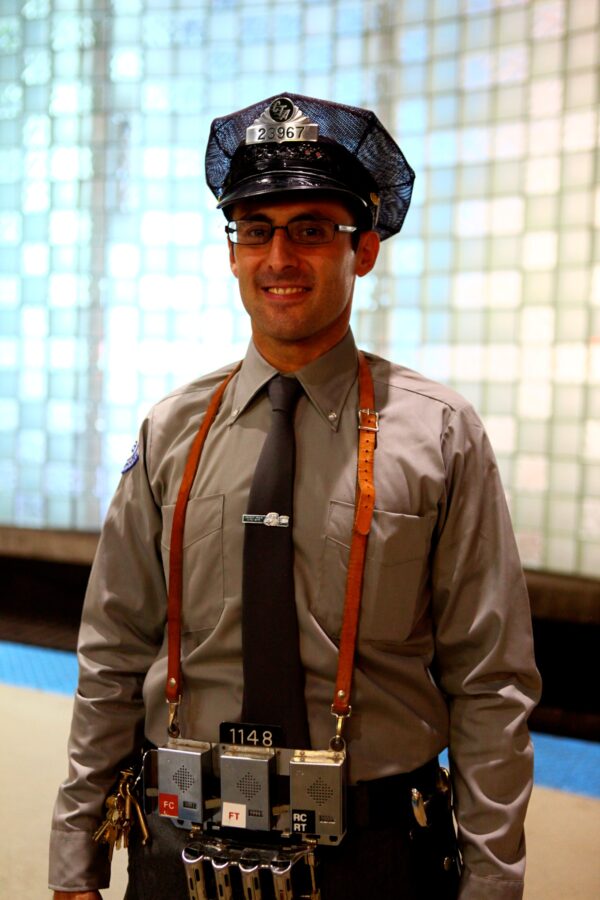
Graham, the conductor
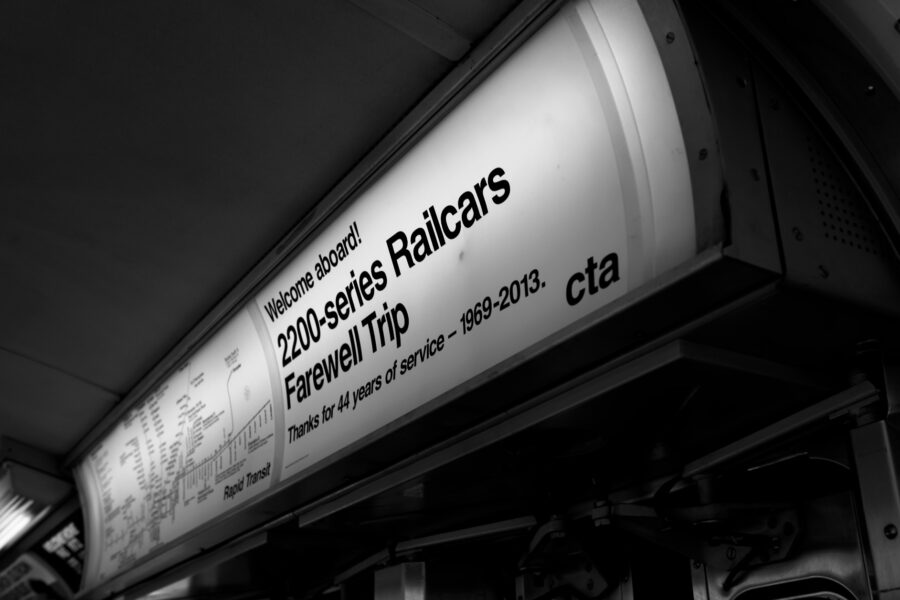
Final run of the 2200 series trains
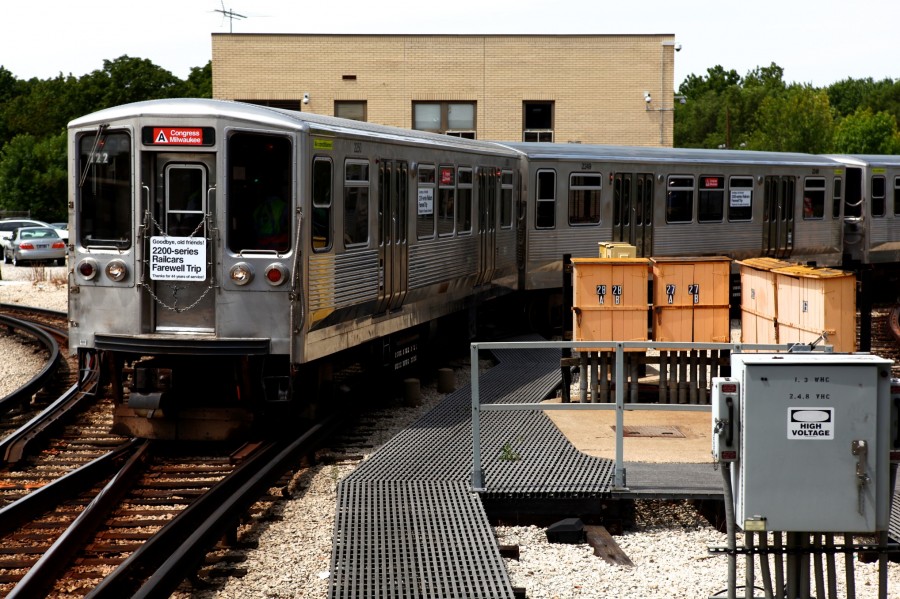
Pulling in for the final departure from Forest Park
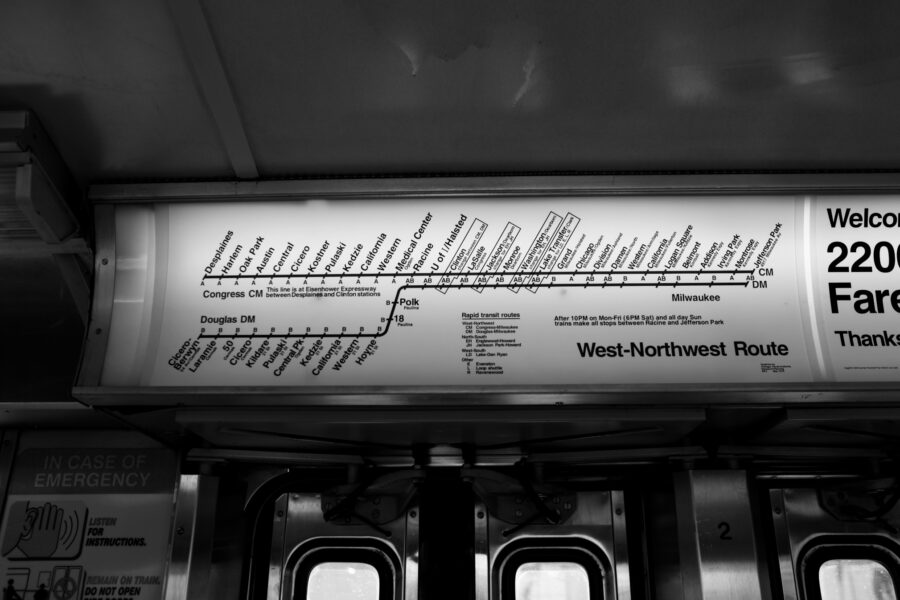
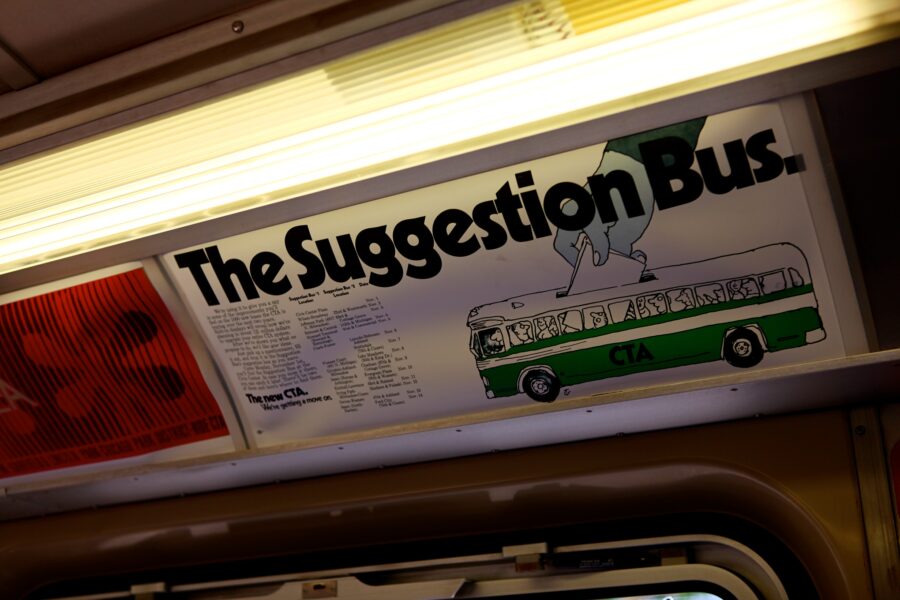
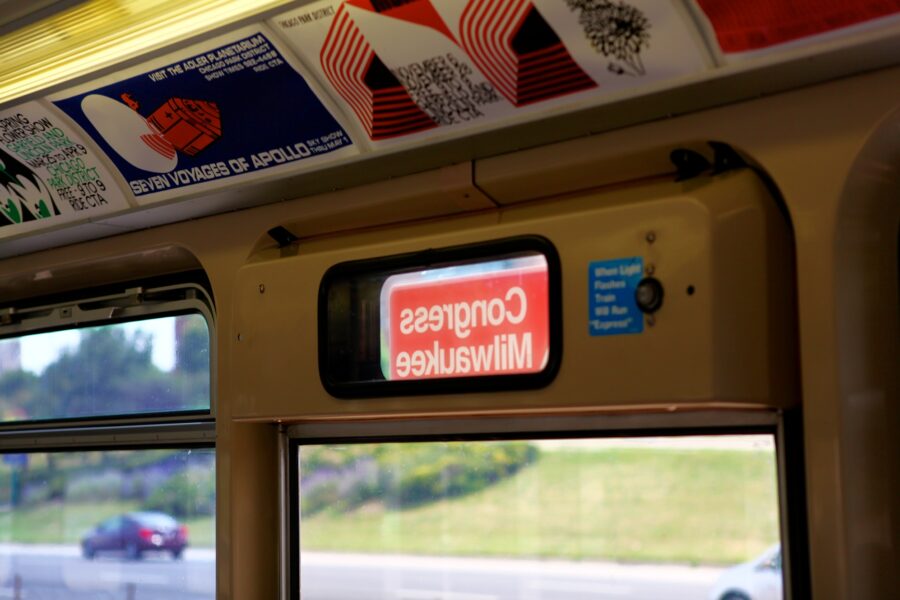
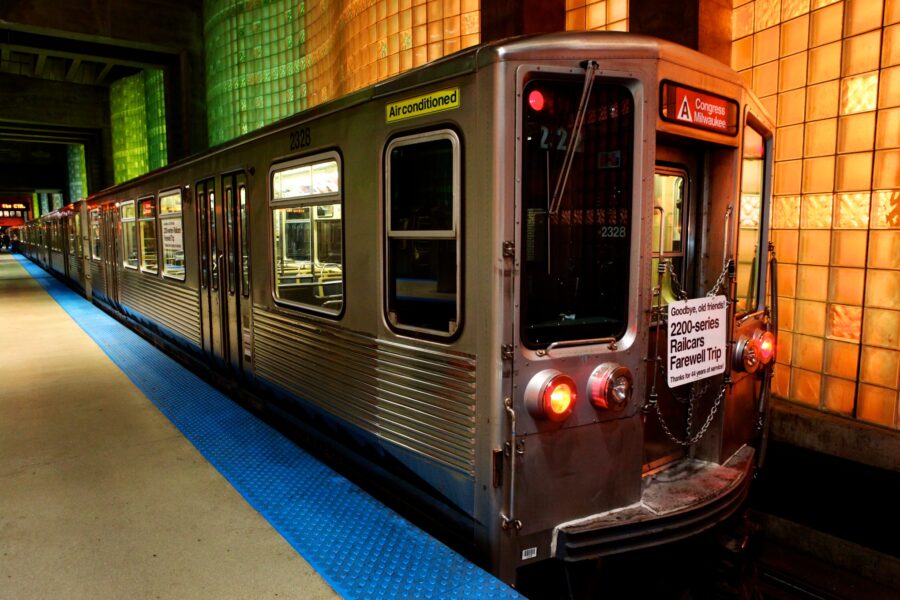
The final departure from O’Hare


Bravo! What a beautiful tribute to the 2200 series. Loved the composition of the shots, so beautiful. Especially liked the shots at 1:25 and 1:47. Hope to see more video from you in the future.
I made a train model of the 2200 series.
[…] check out the great video by Chicago Patterns blogger John Morris. He also has more photos and nice commentary and history of the 2200s on his […]
And so we come to our third cast member that completes this incarnation of ‘The End of the Line’. In the original text of
Good job! Looking forward to the followup video of final run.